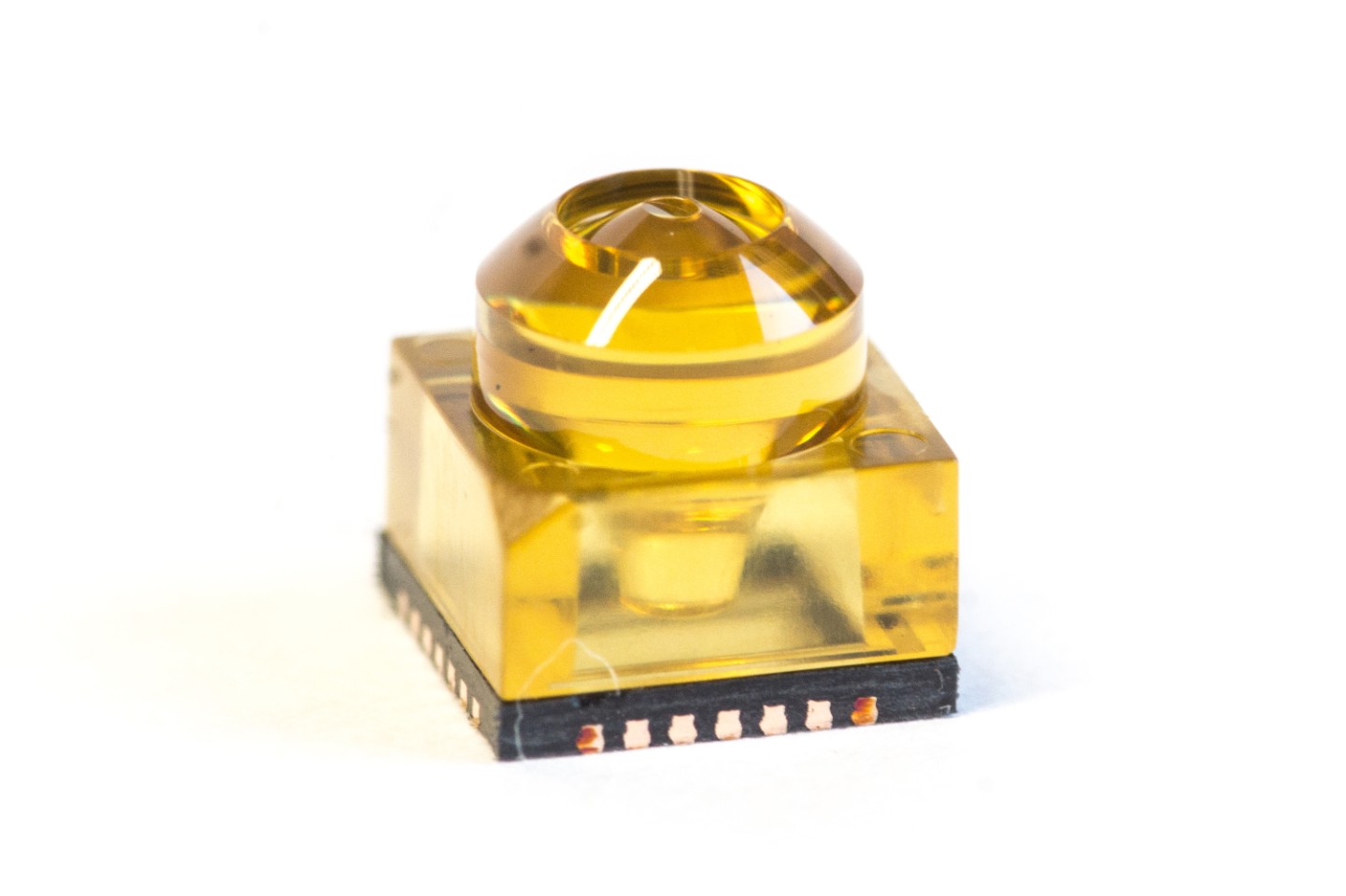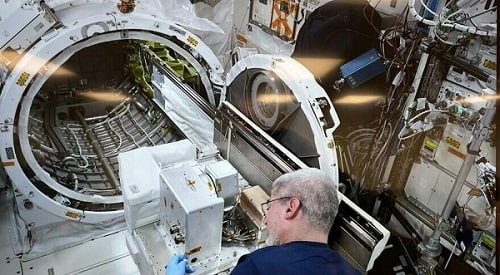DRESDEN, Germany, Nov. 23, 2022 — Use of a modular system, enabling individual components to be replaced and thereby extending service life — can make satellite systems more sustainable. To ensure a problem-free interface between components, a team from the Fraunhofer Institute for Photonic Microsystems IPMS (Fraunhofer IPMS) has developed a transceiver that guarantees data transfer between the components. The system has been on board the International Space Station (ISS) for testing purposes since February 2022.

Li-Fi GigaDock transceiver for short-range, high-data-rate data transmission with light. Courtesy of Fraunhofer IPMS.
The need for modular satellite systems addresses the problem of space debris; at the end of their lifetimes, satellites either burn up in Earth’s atmosphere or remain in Earth orbit. This produces space debris, which generates enormous costs and effort and may endanger life in crewed spaceflight.
To flexibly attach and detach modules directly in space, easy-to-couple and standardized components are favored for modular satellite systems. In addition to the mechanical coupling of the individual modules, optimal modules must ensure the transfer of data and energy so that satellites can be combined as required.
For this reason, the company iBOSS GmbH has brought to market iSSI (intelligent Space System Interface). The solution, developed by a team from RWTH Aachen University, forms a standard interface for such systems.

Astronaut on the International Space Station assembling the components. Courtesy of NASA.
The Fraunhofer IPMS team developed part of the interface, which is called Li-Fi GigaDock technology. The core of the technology is an optical wireless transceiver, a highly integrated device that enables contactless full-duplex and bidirectional data transmission with a data rate of up to 5 Gbit/s. The possible transmission distance of the optical data interface is 5 cm. The component can also be used for rotor-to-stator transmission, as the transceiver functions perfectly even at high speeds.
According to Alexander Noack, head of development for optical wireless communication at Fraunhofer IPMS, beyond space travel, the component can be found in industrial communication systems, medical technology, and docking applications.
The device was flown into space in February and mounted via robot onto the Japanese portion of the ISS for testing and demonstration purposes. It will remain until mid-December to prove its operational capability under vacuum conditions and the influence of radiation.